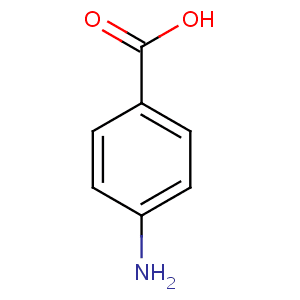Formula C7H7NO2 Molar mass 137.14 g/mol Density 1.37 g/cm³ | IUPAC ID 4-Aminobenzoic acid Melting point 187 °C Appearance White-grey crystals | |
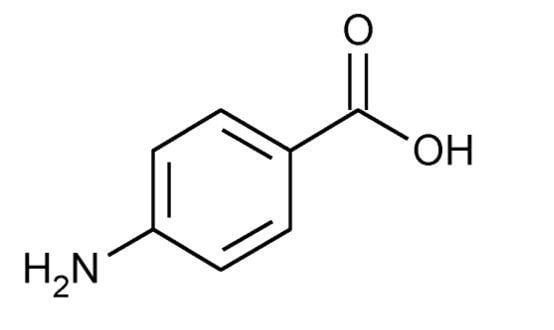 | ||
4 aminobenzoic acid
4-Aminobenzoic acid (also known as para-aminobenzoic acid or PABA because the number 4 carbon in the benzene ring is also known as the para position) is an organic compound with the formula H2NC6H4CO2H. PABA is a white solid, although commercial samples can appear gray. It is slightly soluble in water. It consists of a benzene ring substituted with amino and a carboxyl groups. The compound occurs naturally.
Contents
- 4 aminobenzoic acid
- Production and occurrence
- Biochemistry
- Medical use
- Nutritional supplement
- Commercial and industrial use
- Derivatives
- Safety considerations
- References
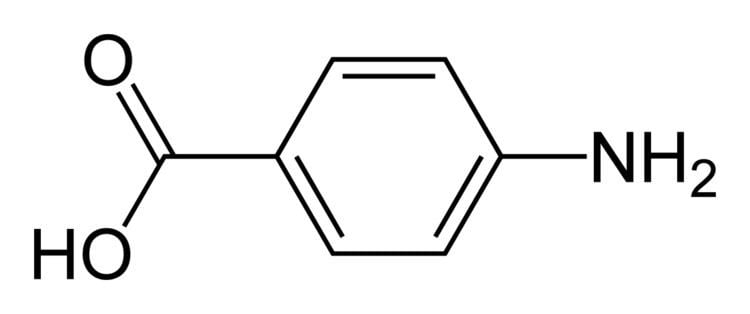
Production and occurrence
In industry, PABA is prepared mainly by two routes:
Food sources of PABA include liver, brewer's yeast (and unfiltered beer), kidney, molasses, mushrooms, and whole grains.
Biochemistry
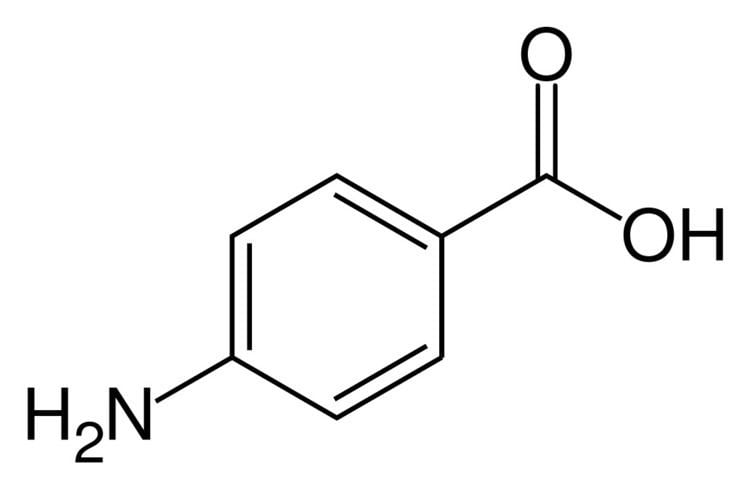
PABA is an intermediate in the synthesis of folate by bacteria, plants, and fungi. Many bacteria, including those found in the human intestinal tract such as E. coli, generate PABA from chorismate by the combined action of the enzymes 4-amino-4-deoxychorismate synthase and 4-amino-4-deoxychorismate lyase. Plants produce PABA in their chloroplasts, and store it as a glucose ester (pABA-Glc) in their tissues. Humans lack the enzymes to convert PABA to folate, so require folate from dietary sources such as green leafy vegetables. In humans, PABA is considered nonessential and, although it has been referred to historically as "vitamin Bx", is no longer recognized as a vitamin, because most people have colon bacteria that generate PABA.
Sulfonamide drugs are structurally similar to PABA, and their antibacterial activity is due to their ability to interfere with the conversion of PABA to folate by the enzyme dihydropteroate synthetase. Thus, bacterial growth is limited through folate deficiency.
Medical use
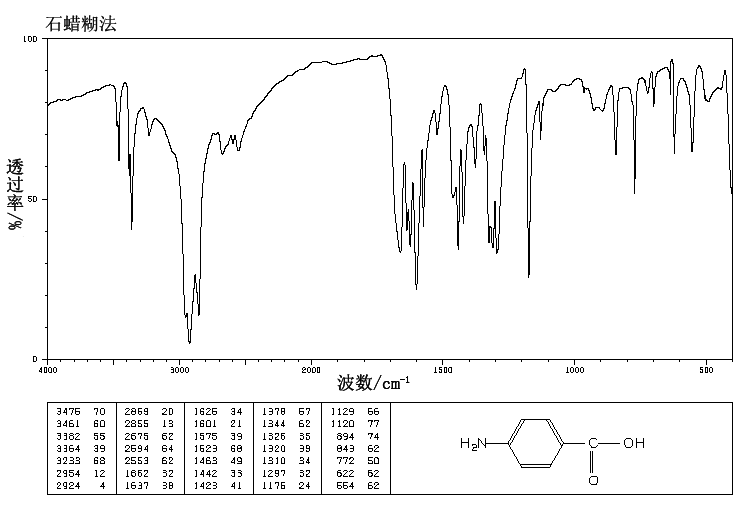
The potassium salt is used as a drug against fibrotic skin disorders, such as Peyronie's disease, under the trade name Potaba. PABA is also occasionally used in pill form by sufferers of irritable bowel syndrome to treat its associated gastrointestinal symptoms, and in nutritional epidemiological studies to assess the completeness of 24-hour urine collection for the determination of urinary sodium, potassium, or nitrogen levels.
Nutritional supplement
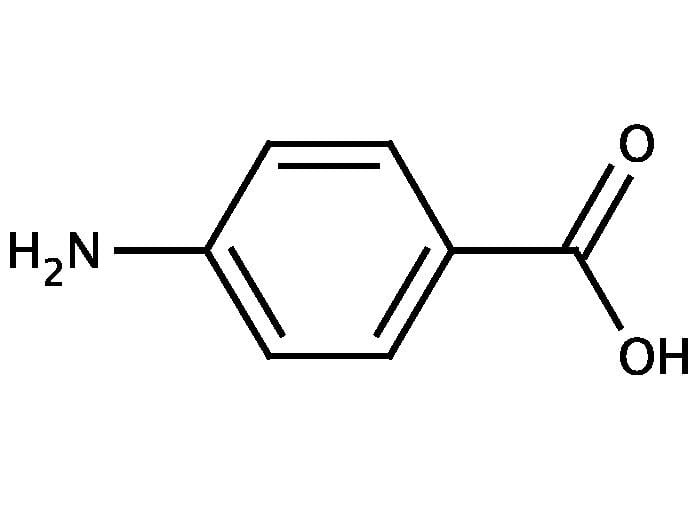
Despite the lack of any recognized syndromes of PABA deficiency in humans, except for a few people who lack the bacteria that generate PABA in their colons, many claims of benefit are made by commercial suppliers of PABA as a nutritional supplement. Benefit is claimed for fatigue, irritability, depression, weeping eczema (moist eczema), scleroderma (premature hardening of skin), patchy pigment loss in skin (vitiligo), and premature grey hair.
Commercial and industrial use

PABA finds use mainly in the biomedical sector. Other uses include its conversion to specialty azo dyes and crosslinking agents.
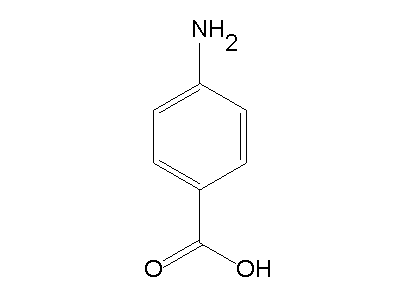
In the past, PABA was widely used in sunscreens as a UV filter. It is a UVB absorber, meaning it can absorb wavelengths between 290 and 320 nm. Patented in 1943, PABA was one of the first active ingredients to be used in sunscreen. The first in vivo studies on mice showed that PABA reduced UV damage. In addition, it was shown to protect against skin tumors in rodents. Animal and in vitro studies in the early 1980s suggested PABA might increase the risk of cellular UV damage. On the basis of these studies, as well as problems with allergies and clothing discoloration, PABA fell out of favor as a sunscreen. However, water-insoluble PABA derivatives such as padimate O are currently used in some products.
Derivatives
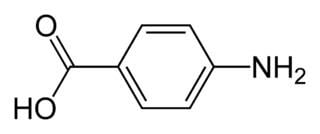
PABA is used to in the synthesis of various drugs, especially local anesthetics, including acedoben, procaine, procainamide, tutocaine, bentiromide, risocaine, farmocaine, calocaine, topicaine, butamben, and isobutamben. Others include aminohippuric acid, nufenoxole, cetaben, benaxibine, xenazoic acid, pafencil, and votracon.
Safety considerations

PABA is largely nontoxic; the median lethal dose of PABA in dogs (oral) is 2 g/kg. Allergic reactions to PABA can occur. It is formed in the metabolism of certain ester local anesthetics, and many allergic reactions to local anesthetics are the result of reactions to PABA.

